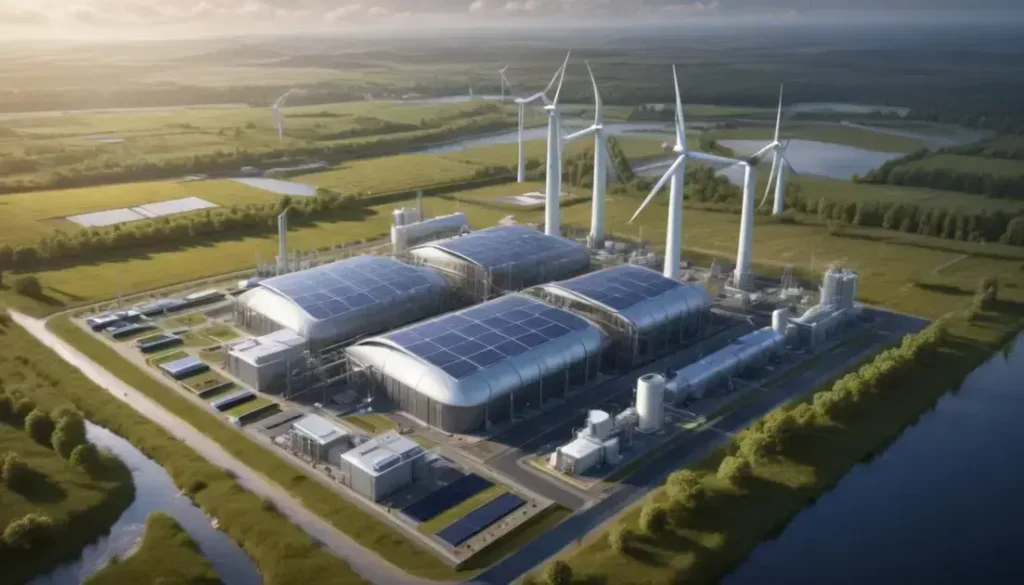The blue economy focuses on the sustainable use of ocean resources for economic growth, encompassing sectors like fisheries, marine renewable energy, and eco-tourism, while promoting conservation and the health of marine ecosystems.
In today’s world, ocean finance is not just a buzzword but a vital element in promoting sustainable development. Have you considered how this sector can shape our economies?
Introduction to ocean finance and biodiversity
Ocean finance plays a crucial role in the sustainable use of marine resources. It encompasses various financial mechanisms designed to support projects that aim to conserve the health of our oceans while ensuring economic growth. The challenge lies in balancing biodiversity conservation with the demands of development.
Investing in ocean-related initiatives not only bolsters local economies but also addresses critical issues such as climate change and marine pollution. Sustainable fisheries, for instance, benefit from financial support that encourages responsible practices, which in turn protect marine ecosystems.
Furthermore, innovative financing models like blue bonds and impact investing are emerging as effective tools to raise funds for marine conservation. These models promote investment in sustainable development, creating a win-win scenario for investors and the environment. Engaging a variety of stakeholders, including governments, NGOs, and private sector players, is vital to scaling these initiatives.
As we look to the future, the integration of traditional finance with sustainability goals will prove essential. By fostering collaboration across sectors, we can ensure that ocean resources are preserved for generations to come, while supporting the livelihoods of communities that depend on the seas. The synergy of ocean finance and biodiversity represents a pathway toward a more sustainable economy.
The importance of sustainable economic growth
Sustainable economic growth is crucial for balancing human development and environmental health. This approach emphasizes the need to enhance economic activity while safeguarding our natural resources. It focuses on creating a stable economy that meets the needs of the present without compromising the ability of future generations to meet their own needs.
One key aspect of sustainable economic growth is the promotion of green technologies. These innovations reduce environmental impact and enhance efficiency across various sectors, including energy, agriculture, and transportation. By investing in sustainable practices, businesses not only adhere to regulatory guidelines but also appeal to a growing consumer base that prioritizes sustainability.
Furthermore, sustainable growth fosters resilience in local economies. It encourages diversification, reducing dependence on finite resources and enhancing the capacity to withstand economic fluctuations. Communities that adopt sustainable practices are better equipped to deal with challenges such as climate change and resource scarcity.
Integrating sustainability into economic policies leads to robust job creation, particularly in emerging sectors such as renewable energy and sustainable agriculture. These sectors not only provide employment opportunities but also contribute to overall societal well-being by promoting healthier ecosystems and improving quality of life.
Ocean health and its effect on global markets
Ocean health is vital for the stability of our global markets. Healthy oceans provide numerous ecosystem services, including carbon sequestration, climate regulation, and supporting fisheries that contribute significantly to global food security. When ocean health declines due to pollution, overfishing, or climate change, it creates substantial repercussions across economies.
The impact of degraded ocean ecosystems can be seen in fluctuating fish stocks, which directly affect the livelihoods of millions of people who rely on fishing for income. As marine resources dwindle, seafood prices can rise, leading to food insecurity and economic instability in communities dependent on these resources.
Furthermore, the degradation of ocean health can disrupt global supply chains. For industries such as tourism and shipping, any disturbance in marine ecosystems can lead to a decline in visitor numbers or increased operational costs. This ripple effect underscores the interconnectedness of ocean health and economic viability.
Investing in ocean conservation can therefore be seen as investing in the future of global markets. Sustainable practices can restore marine health, support biodiversity, and, ultimately, enhance economic resilience. By prioritizing ocean health, we not only protect vital ecosystems but also secure a stable economic future for communities worldwide.
Investments in marine conservation
Investments in marine conservation are essential for the sustainability of our oceans and the well-being of future generations. By directing financial resources towards initiatives aimed at protecting marine ecosystems, we can enhance biodiversity and ensure the resilience of ocean habitats.
These investments can take many forms, including funding for marine protected areas, supporting sustainable fisheries, and promoting research into the effects of climate change on oceans. For instance, marine protected areas help to restore fish populations and rebuild crucial habitats, fostering healthy ecosystems that provide essential services.
Furthermore, public-private partnerships are increasingly important in mobilizing resources for conservation efforts. Businesses can play a critical role by integrating sustainability into their practices and supporting conservation projects that align with their corporate social responsibility goals. Engaging local communities in these initiatives fosters stewardship and ensures that conservation efforts meet the needs of those who depend on the ocean for their livelihoods.
Additionally, innovative financing mechanisms such as blue bonds are emerging as powerful tools to raise capital for marine conservation. These financial instruments attract investors interested in sustainable outcomes while providing necessary funding for critical projects. By prioritizing investments in marine conservation, we safeguard not only the health of our oceans but also the economic stability of communities worldwide.
Collaboration in blue finance
Collaboration in blue finance is essential for successfully addressing the urgent challenges facing our oceans. As the demand for sustainable practices increases, various stakeholders, including governments, NGOs, and private companies, must come together to forge innovative solutions. By working collaboratively, these entities can pool resources and expertise, amplifying the impact of their conservation efforts.
Public-private partnerships play a vital role in advancing blue finance initiatives. These collaborations can lead to innovative funding mechanisms, such as blue bonds, which attract capital for projects aimed at restoring marine ecosystems. Investors and sustainable development goals align when the business case for protecting ocean resources is made clear through solid collaboration.
Moreover, collaboration fosters knowledge sharing and capacity building among different stakeholders. By exchanging best practices and leveraging collective expertise, stakeholders can design more effective strategies for ocean conservation. This approach not only enhances project outcomes but also builds trust among diverse groups, which is crucial for long-term success.
Stakeholder engagement is crucial in blue finance, ensuring that local communities are central to the decision-making process. By involving those directly impacted by marine policies, initiatives are more likely to address real needs, leading to more sustainable and equitable outcomes. Ultimately, effective collaboration in blue finance will drive the transformation needed to safeguard our oceans for future generations.
Empowering coastal communities
Empowering coastal communities is key to achieving sustainable ocean management. These communities often rely on marine resources for their livelihoods, making their involvement in conservation efforts essential. By providing education and resources, we can help these communities adopt sustainable practices that not only preserve their environment but also enhance their economic stability.
One effective approach is to involve local populations in decision-making processes related to marine policies. Engaging communities ensures that their traditional knowledge and experiences are considered, leading to more effective and culturally appropriate strategies. For instance, fishery management plans that incorporate input from local fishers often result in better compliance and outcomes.
Additionally, training and capacity-building initiatives can empower community members to take charge of their resources. This can involve providing skills training in sustainable fishing techniques, aquaculture, or eco-tourism. Investing in local enterprise development not only supports economic growth but also reduces reliance on destructive fishing practices.
Creating partnerships between communities and conservation organizations can lead to successful initiatives that reinforce social and environmental objectives. These collaborations can help secure funding and technical assistance for projects, enabling coastal communities to play a leading role in marine conservation. Ultimately, empowered coastal communities are critical to ensuring the health of our oceans for the future.
Role of Standard Chartered in ocean finance
The role of Standard Chartered in ocean finance is significant as the bank commits to promoting sustainable practices within the maritime sector. By providing financing solutions tailored to the unique challenges of ocean industries, Standard Chartered plays a crucial part in encouraging sustainable development. This includes supporting initiatives that focus on conservation, resource management, and climate resilience.
Standard Chartered has developed various financial instruments aimed at addressing the specific needs of marine conservation projects. These include blue bonds, which fund sustainable marine and freshwater projects. By mobilizing capital for conservation efforts, the bank helps to translate financial resources into meaningful environmental impact, promoting the health of our oceans.
Moreover, the bank engages in partnerships with organizations that share similar sustainability goals, reinforcing its commitment to ocean health. Collaborative efforts enhance the effectiveness of financing by integrating knowledge and expertise from diverse sectors. This strategy allows for more comprehensive solutions that benefit both the environment and local economies.
The commitment of Standard Chartered to transparency and responsible governance further strengthens its position in ocean finance. By adhering to strict environmental and social principles, the bank not only mitigates risks but also builds trust within communities and stakeholders, ensuring that projects funded by their financial products contribute positively to marine conservation efforts.
Ocean conservation efforts and funding
Ocean conservation efforts are critical to maintaining the health of marine ecosystems. These efforts require significant financial resources to implement effective strategies for protecting biodiversity. Sustainable funding mechanisms are essential to support projects that focus on habitat restoration, species protection, and pollution reduction.
One prominent approach to funding ocean conservation is through grants and donations from philanthropic organizations, which provide necessary capital for grassroots initiatives and larger projects. These funds enable local communities and NGOs to develop and execute conservation plans tailored to their unique environmental challenges.
In addition, innovative financing methods such as blue bonds are gaining traction. These financial instruments allow investors to fund sustainable marine projects while generating returns. By linking funding to measurable conservation outcomes, blue bonds encourage accountability and ensure funds are used effectively.
Government funding also plays a crucial role, with many countries investing in ocean protection as part of their economic recovery plans. Such investments not only benefit marine environments but also contribute to local economies, creating jobs in conservation and sustainable fisheries.
Ultimately, a collaborative approach to funding, involving governments, private sector investors, and non-profit organizations, is essential for driving impactful ocean conservation efforts. By mobilizing resources from diverse sources, we can work together to safeguard our oceans for future generations.
Exploring the blue economy
Exploring the blue economy involves understanding the sustainable use of ocean resources for economic growth. This sector encompasses various activities such as fisheries, aquaculture, tourism, and renewable energy production. By harnessing marine assets responsibly, countries can promote economic development while ensuring the health of marine ecosystems.
A key aspect of the blue economy is its focus on sustainability. This means prioritizing practices that minimize environmental impact, maintain biodiversity, and ensure that resources are available for future generations. Sustainable fisheries, for instance, aim to manage fish stocks to prevent overfishing, ensuring that the livelihoods of coastal communities are protected.
Investment in marine renewable energy is also a vital component of the blue economy. Technologies like offshore wind, tidal, and wave energy are rapidly developing and play a significant role in reducing dependence on fossil fuels. By investing in these clean energy sources, countries can enhance energy security while contributing to climate change mitigation efforts.
Furthermore, the blue economy encourages innovation and entrepreneurship. New business models focusing on conservation and sustainability are emerging, fostering growth in marine technology and sustainable tourism. By transforming traditional practices, stakeholders can create a vibrant blue economy that benefits both people and the planet.
Strategic partnerships for sustainability
Strategic partnerships for sustainability play a vital role in addressing environmental challenges and promoting long-term ecological health. By collaborating across sectors, organizations can pool resources, share knowledge, and develop innovative solutions that benefit both the planet and the economy. These partnerships often involve governments, non-profits, and private companies working together towards common sustainability goals.
One of the key advantages of strategic partnerships is the combined expertise they bring. Organizations can leverage each other’s strengths to implement more effective conservation strategies. For example, environmental NGOs can partner with businesses to create sustainable supply chains, ensuring that natural resources are used responsibly and efficiently.
Additionally, partnerships can help mobilize funding for sustainable initiatives. By collaborating, organizations can access a broader range of financial resources, whether through grants, investments, or shared funding models. This collaboration enhances the financial viability of projects focused on conservation and ecosystem restoration.
Moreover, strategic partnerships foster community engagement and local participation. When local stakeholders are involved in sustainability initiatives, they are more likely to support and participate in conservation efforts. Empowering communities to take part in decision-making ensures that initiatives are socially acceptable and culturally relevant.
Ultimately, fostering strategic partnerships is essential for creating impactful sustainability measures that lead to meaningful change in environmental protection and resource management.
Conclusion and future perspectives
Conclusion and future perspectives for ocean conservation emphasize the importance of continued commitment to sustainable practices and innovative financing solutions. As global challenges like climate change and overfishing intensify, the need for effective environmental policies becomes increasingly critical. Stakeholders must prioritize collaborative efforts that integrate conservation with economic development.
Moving forward, embracing the concept of a circular economy can significantly impact ocean health. By minimizing waste and promoting the reuse of materials, industries can reduce pressure on marine environments and foster resilience. This shift illustrates the interconnectedness of economic activities and ecological well-being.
Moreover, the integration of technology in monitoring and managing marine resources presents new opportunities. Advances in data analytics, remote sensing, and artificial intelligence enable more effective tracking of ocean health and resource use. These technologies empower stakeholders to make informed decisions that balance conservation with economic interests.
Investment in education and community engagement is also crucial. Empowering local communities with the knowledge and tools to manage their resources sustainably fosters a sense of ownership and responsibility towards marine environments. This grassroots approach is vital for the long-term success of conservation initiatives.
By focusing on these future perspectives, we can strive for a healthier ocean that supports biodiversity, local livelihoods, and global sustainability. Our collective efforts will determine the future of our planet’s precious marine resources.
In Summary: The Path Forward for Ocean Conservation
Ocean conservation is essential for maintaining the health of our planet. By promoting sustainable practices and fostering strategic partnerships, we can protect marine ecosystems while supporting economic growth.
Embracing new technologies and innovative financing solutions will help us tackle the challenges facing our oceans today. A circular economy, where waste is minimized and resources are reused, can lead to healthier marine environments.
Education and community engagement are equally important. By empowering local communities to manage their resources sustainably, we enhance our chances of achieving long-term success in conservation efforts.
As we move forward, it is crucial to remain committed to ocean conservation. Together, we can ensure that our oceans thrive for generations to come and continue to be a vital resource for all.
People Also Ask
What is the blue economy?
The blue economy refers to the sustainable use of ocean resources for economic growth, which includes sectors like fisheries, aquaculture, and marine renewable energy.
How can we protect marine ecosystems?
Marine ecosystems can be protected by promoting sustainable fishing practices, reducing pollution, and establishing marine protected areas.
What role do communities play in ocean conservation?
Communities are essential for ocean conservation as they directly depend on marine resources. Engaging them ensures that local knowledge and needs are incorporated into conservation efforts.
What are blue bonds?
Blue bonds are financial instruments designed to fund projects that aim to conserve marine and freshwater resources while generating returns for investors.
How does technology support ocean conservation?
Technology helps monitor and manage marine resources effectively, using data analytics, remote sensing, and AI to enhance conservation strategies.
Why is collaboration important for sustainability initiatives?
Collaboration combines resources, expertise, and funding from various stakeholders, leading to more effective and comprehensive sustainability initiatives that benefit both the environment and economy.


